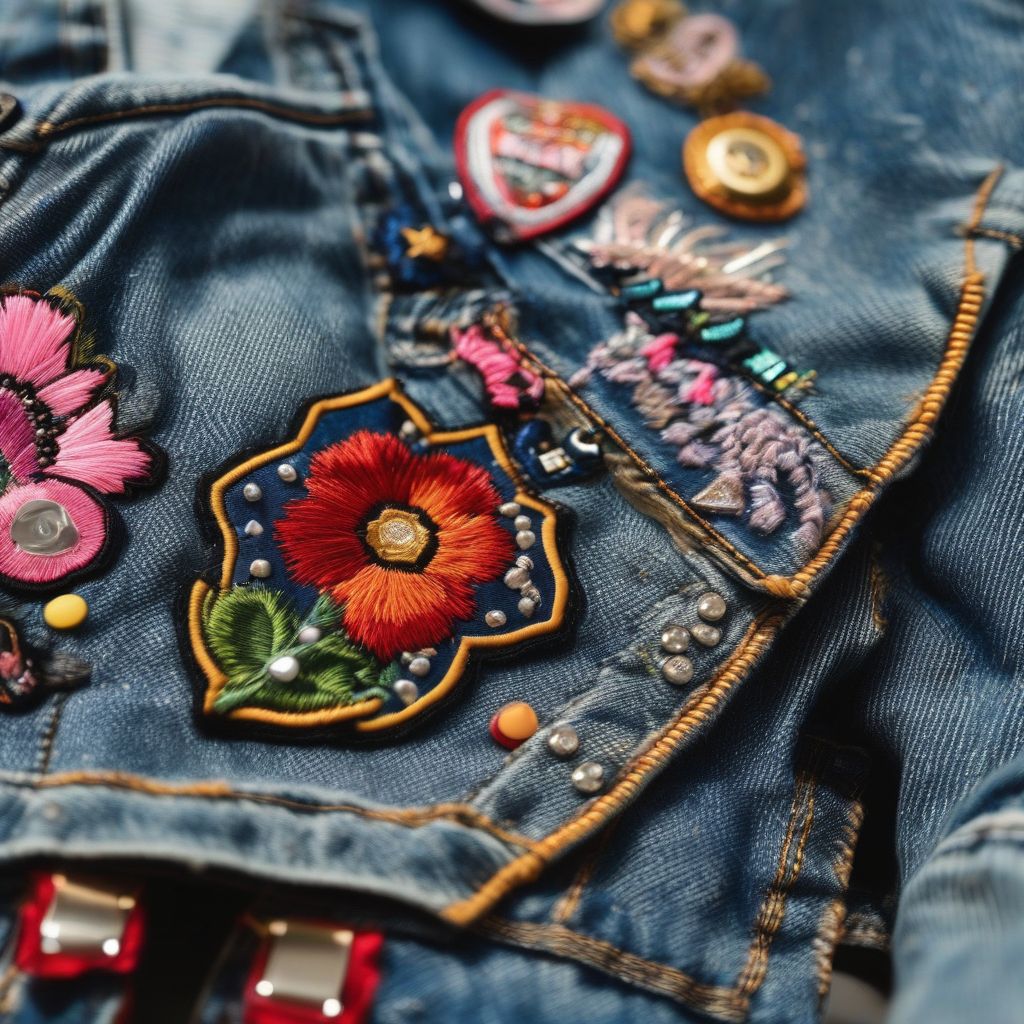Imagine this: You find a vintage denim jacket tucked away in the back of your closet. It’s a little worn, a little outdated, but something about it calls to you. Instead of tossing it, you reimagine it – adding some funky patches, embellishing it with embroidery, or even turning it into a totally new piece. That’s the magic of upcycling in a nutshell!
Now, picture that same concept applied to the entire fashion industry. That’s the exciting potential of upcycling – a trend that’s transforming the way we think about clothing and its impact on our world.
What Exactly is Upcycling in Fashion?
Upcycling is like giving your clothes a second life, but with a stylish twist. It’s about taking discarded materials, often old clothes, fabrics, or even industrial scraps, and transforming them into something entirely new and often more valuable.
This is different from recycling, where materials are broken down and repurposed. Upcycling keeps the original material intact, simply giving it a design makeover. Think turning old t-shirts into trendy tote bags, denim scraps into patchwork quilts, or even plastic bottles into chic jackets!
 Upcycled Denim Jacket
Upcycled Denim Jacket
Why is Upcycling in Fashion So Important? Let’s Break it Down:
1. It’s a Powerful Weapon Against Textile Waste
The fashion industry is a major player in the global waste crisis. Fast fashion churns out trend-driven clothes at breakneck speed, often leading to garments ending up in landfills after just a few wears.
Here’s the sobering reality:
- The average consumer buys 60% more clothing today than they did 20 years ago, and they keep them for half as long. (Source: Ellen MacArthur Foundation)
- Globally, we produce 92 million tons of textile waste annually, and that number is expected to double by 2030. (Source: UN Environment Programme)
Upcycling tackles this problem head-on by giving these discarded materials a new purpose. Instead of adding to overflowing landfills, we’re giving them a chance to shine again!
2. It Reduces the Environmental Footprint of Fashion
From cotton farming to manufacturing and transportation, the fashion industry leaves a considerable environmental mark. Upcycling helps lighten this load in a number of ways:
- Conserves Resources: By using existing materials, upcycling lessens the demand for virgin resources like water, energy, and raw materials needed to create new fabrics.
- Minimizes Pollution: Traditional textile production processes often involve harsh chemicals and dyes that pollute waterways and harm ecosystems. Upcycling sidesteps these processes, reducing pollution and its impact on the planet.
- Lowers Greenhouse Gas Emissions: The fashion industry is a significant contributor to greenhouse gas emissions. Upcycling helps reduce these emissions by lessening the need for energy-intensive manufacturing and transportation associated with producing new clothing.
3. It Promotes Creativity and Unique Style
One of the most exciting aspects of upcycling is the sheer creativity it unleashes. It’s about looking at materials in a new light, seeing potential beyond their original purpose. This ingenuity leads to one-of-a-kind pieces that stand out from mass-produced fashion.
For designers and consumers alike, upcycling offers a chance to:
- Express Individuality: Embrace unique, handcrafted pieces that tell a story and reflect personal style.
- Support Ethical Fashion: Choose clothing that aligns with values of sustainability and conscious consumption.
- Discover Hidden Gems: Unearth vintage treasures or transform old favorites into something fresh and exciting.
4. It Can Empower Communities and Drive Social Change
Upcycling has the potential to create economic opportunities and empower communities, particularly in developing countries. By providing training and resources for upcycling initiatives, we can:
- Create Jobs: Support fair wages and ethical working conditions in the fashion industry.
- Preserve Traditional Craftsmanship: Keep age-old techniques of sewing, weaving, and dyeing alive while providing sustainable livelihoods for artisans.
- Promote Circular Economy Models: Encourage a shift away from linear “take-make-dispose” systems towards a more circular model where materials are reused, repurposed, and given new life.
How to Embrace Upcycling in Your Own Life
- Raid Your Closet: That old t-shirt you haven’t worn in years? It could be a trendy tote bag in the making! Look at your clothes with fresh eyes and see what you can repurpose.
- Support Upcycled Brands: Seek out brands and designers who prioritize upcycled materials and sustainable practices.
- Get Crafty!: Try your hand at upcycling DIY projects. There are tons of tutorials and inspiration online to get you started.
- Shop Secondhand: Explore thrift stores, vintage shops, and online marketplaces for unique upcycled finds.
- Spread the Word!: Share your passion for upcycling with friends and family, and encourage them to join the movement!
[amazon bestseller=”upcycling fashion”]
Upcycling: A Fashion Revolution Worth Embracing
Upcycling is more than just a trend; it’s a powerful solution for a more sustainable and ethical fashion industry. By embracing upcycling, we can reduce waste, conserve resources, express our creativity, and contribute to a healthier planet – all while looking fabulous!
